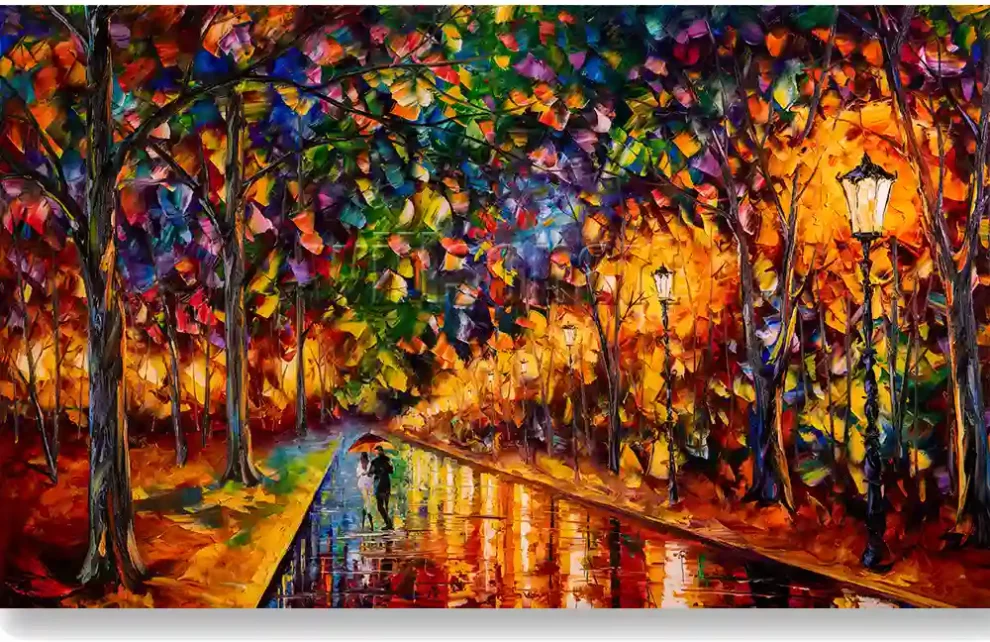Oil painting is a versatile and expressive medium that has been cherished by artists for centuries. One of the remarkable aspects of oil painting is its ability to accommodate various styles and techniques, allowing artists to create diverse and captivating artworks. In this article, we’ll embark on a journey to explore different styles in oil painting, from the traditional to the contemporary, and discover the beauty of artistic diversity.
1. Realism: Capturing the Details
Realism is a style characterized by an accurate and detailed representation of the subject matter. Artists in this style strive to capture every nuance, texture, and subtlety of their subjects. Realist oil paintings often have an astonishing level of detail, making the subjects appear almost lifelike. Famous realist painters include Johannes Vermeer and Edward Hopper.
2. Impressionism: Capturing the Moment
Impressionism is known for its emphasis on capturing the fleeting moment and the effects of light and color. Impressionist oil paintings often feature loose brushwork and a focus on the immediate visual impression. Artists like Claude Monet and Pierre-Auguste Renoir are renowned for their contributions to this style.
3. Expressionism: Conveying Emotion
Expressionism is a style that prioritizes emotion and personal expression over realistic representation. Artists in this style use bold colors, exaggerated forms, and dramatic brushwork to convey intense emotions and explore the inner psyche. Edvard Munch’s “The Scream” is an iconic example of expressionist art.
4. Abstract Art: Beyond Representation
Abstract art goes beyond representation and focuses on shape, color, and form as independent elements of artistic expression. Abstract oil paintings can be non-representational or semi-representational, allowing for a wide range of interpretations. Artists like Wassily Kandinsky and Jackson Pollock are pioneers of abstract art.
5. Surrealism: Unleashing the Subconscious
Surrealism combines reality and dreamlike elements to create artworks that challenge the boundaries of logic and reason. Surrealist oil paintings often feature strange and fantastical scenes, tapping into the depths of the subconscious mind. Salvador Dalí’s surreal masterpieces are renowned worldwide.
6. Cubism: Breaking Down Reality
Cubism is characterized by the fragmentation and reassembly of objects and subjects into abstract, geometric shapes. It offers a unique perspective on the world, breaking down reality into multiple viewpoints. Pablo Picasso and Georges Braque are among the key figures in the development of Cubism.
7. Pop Art: Celebrating Consumer Culture
Pop Art emerged in the mid-20th century and celebrates popular culture, consumer products, and everyday life. It often features bold, bright colors and the repetition of familiar images. Andy Warhol’s iconic Campbell’s Soup Cans are emblematic of this style.
8. Contemporary Realism: A Modern Twist
Contemporary realism takes the principles of realism but infuses them with a modern twist. Artists in this style may incorporate contemporary subjects, social commentary, or unique interpretations of reality. Contemporary realist oil painters continue to push the boundaries of the traditional style.
9. Photorealism: Hyper-Realistic Precision
Photorealism aims to replicate photographs with an astonishing level of precision and detail. Artists in this style use a meticulous approach to create oil paintings that closely resemble high-resolution photographs. Chuck Close is a renowned figure in the world of photorealism.
10. Abstract Expressionism: Freedom of Expression
Abstract expressionism combines the freedom of abstraction with the emotional intensity of expressionism. Artists use spontaneous brushwork, bold gestures, and a sense of movement to convey emotion and energy. Jackson Pollock’s “drip paintings” exemplify this style.
Conclusion:
Oil painting is a boundless realm of artistic possibilities, where different styles allow artists to express their creativity and emotions in unique ways. Whether you’re drawn to the meticulous detail of realism, the dreamlike quality of surrealism, or the bold experimentation of abstract art, oil painting offers a canvas for your imagination to flourish. As you explore these various styles, remember that each one has its own language and history, waiting for you to weave your artistic narrative. So, pick up your brushes, experiment with different styles, and let your oil paintings be a reflection of your artistic journey and vision.
















Add Comment